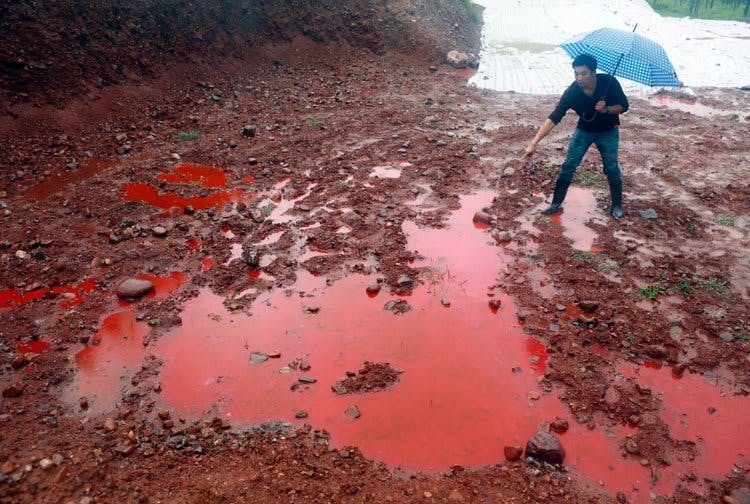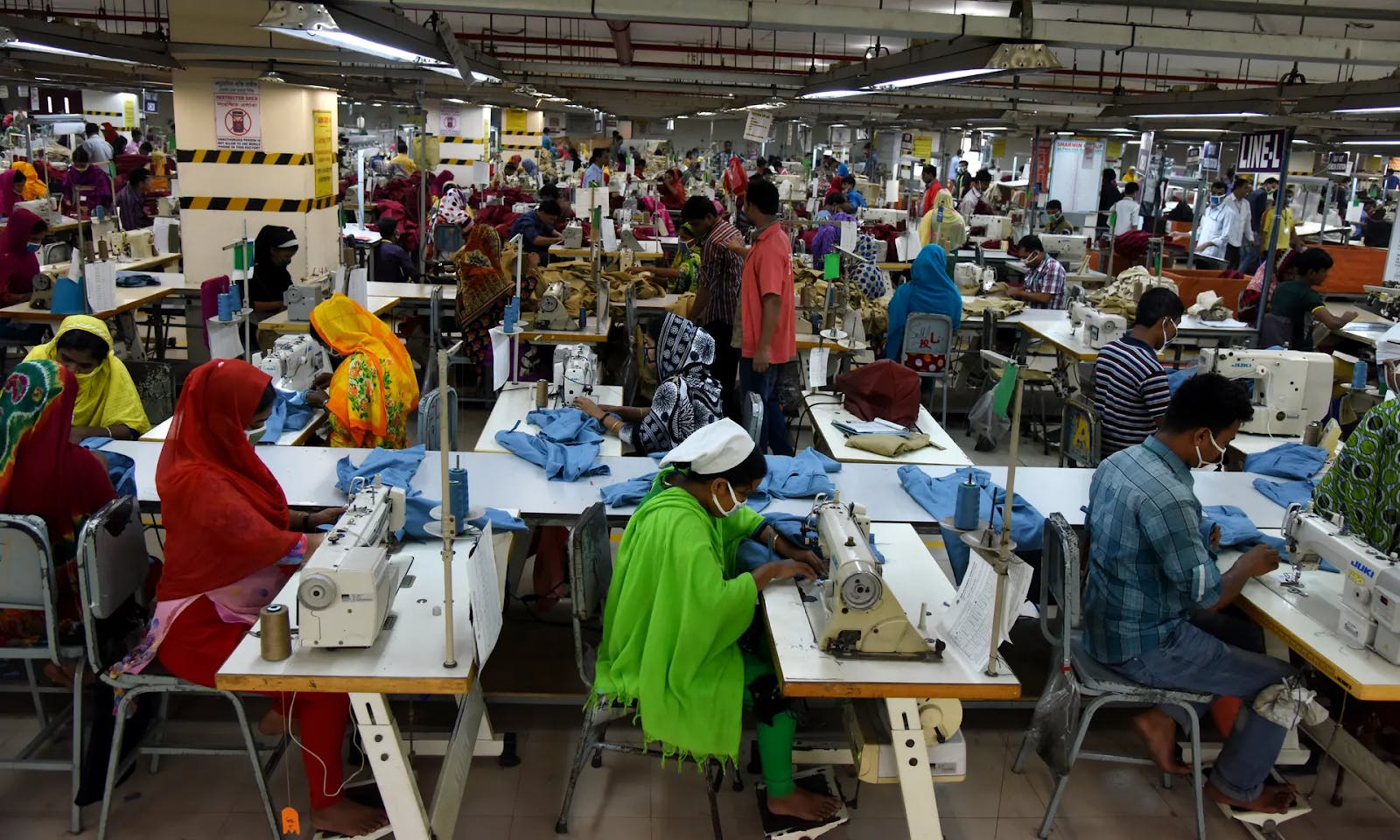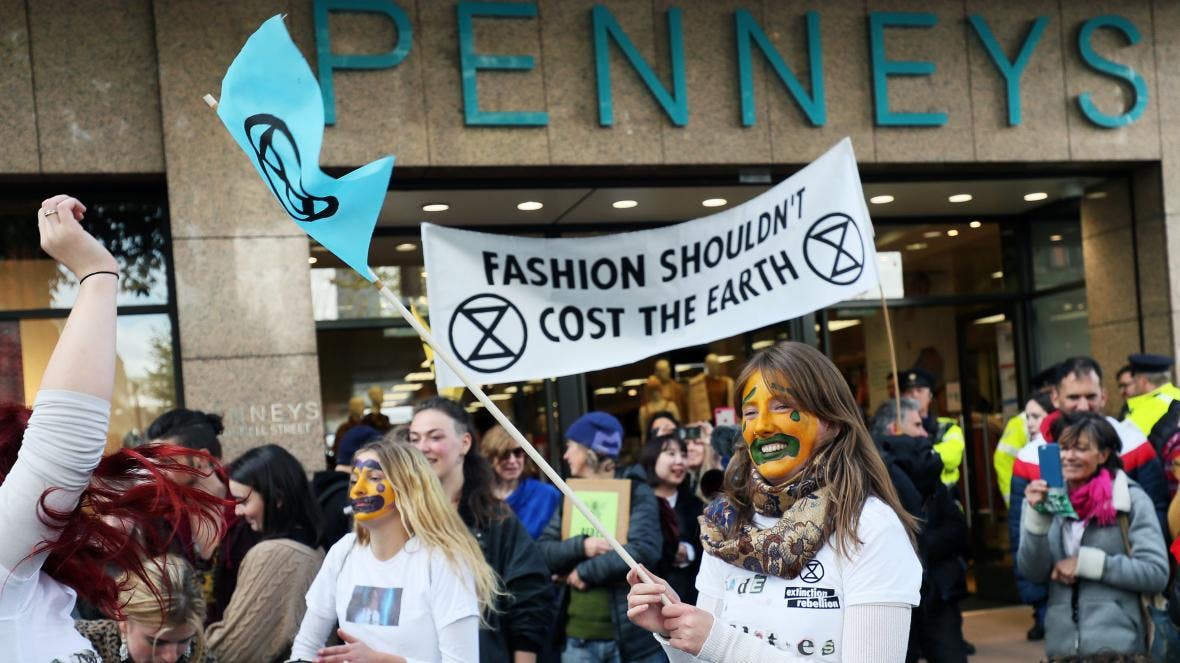“Do I get a coffee? A snack? Or something to wear?” -Elizabeth L. Cline
Overdressed
...A quote encapsulating fast fashion.
The definition
Fast fashion is a term that has become increasingly popular in conversation surrounding fashion and sustainability, and is defined as...
“The cheap production of clothing to meet new fashion trends, at an affordable price for consumers”
The rise of fast fashion
Once upon a time, shopping for clothing was an event. Consumers would save up their money and purchase clothing only a few times per year. In the 1990s, however, the attitude towards clothes shopping drastically changed, and it became an entertaining activity that occurred much more frequently. This shift in consumer demand therefore encouraged the creation of fast fashion, with retailers having to keep up with the call for trendy and affordable clothing.
- Global per-capita textile production, for instance, increased from 5.9 kg to 13 kg per year over the period 1975–2018.
- Global consumption has risen to an estimated 62 million tonnes of apparel per year, and is projected to reach 102 million tonnes by 2030.

Unfortunately, the environmental impacts of the fashion industry are widespread and substantial.
The industry is energy-intensive and currently accounts for 10% of global carbon emissions. According to the UN Framework Convention on Climate Change, such emissions are projected to increase by 60% by the year 2030.
15,000 different chemicals are used in the manufacturing process of clothing. Such chemicals leach into the soil, resulting in loss of biodiversity –by killing plants, insects and microorganisms– loss of soil fertility, and the interruption of biological processes.
The industry is also a major consumer of water using 79 trillion litres per year, which is enough to fill 32 million olympic-size swimming pools. Significant volumes of water are used in the production of raw materials –notably cotton– and in many aspects of textile processing. For example, one cotton shirt requires 7,000 gallons and one pair of jeans requires 2,000 gallons of water to produce.
Social impacts
According to Naomi Klein in her book No Logo, fast fashion brands base their textile production in developing countries due to cheap labour, vast tax breaks, and lenient laws and regulations.
Workers can work for 100+ hours per week, with some working for 72 hours straight with no sleep, to be paid as little as 3 cents per hour. They also face unsafe working conditions, with poor ventilation and extreme temperatures in poorly constructed buildings; an example of the latter is the collapse of a Bangladesh garment factory ‘Rana Plaza’ in 2013, killing 1,134 people, and injuring ~2,500.

A US department of labour report found evidence of forced child labour in Argentina, Bangladesh, Brazil, China, Indonesia, Philippines, Turkey, Vietnam and more, with children as young as 6 years old working for 16 hours per day.
All of these hard truths demonstrate that rapid production and profit is prioritised over human welfare in the fast fashion industry.
What is being done?
Fortunately, it appears that with the increased publicity on the issues surrounding fast fashion, positive steps are being taken.
Below, are some examples from large clothing corporations:
- Levi’s new jeans range ‘Water<Less’ uses 96% less water to produce a pair of jeans. Levi’s is also working towards using 100% sustainably sourced cotton, and partnered with Blue Jeans Go Green to encourage closing the loop, and recycling denim.
- Patagonia provides a repair service for their customers’ clothing, follows fair-trade practices, and uses sustainable materials in production of their garments.
- Adidas teamed up with Parley, to create a unique material made entirely from marine plastic waste ‘Parley Ocean Plastic®’. It is shredded and reworked into high performance polyester yarn, then used to create sportswear.
- Nike raised the minimum wage of their workers, improved oversight of labour practices, and ensured factories have clean air. This followed the publishing of a 108-page document where they admitted to the poor conditions and pay within their factories. In a quest to ensure transparency, they continue to publish regular public reports on factory conditions.
- ASOS signed a workers’ rights deal in 2017, protecting the interests of their factory workers. They teamed up with ‘IndustriALL’, the world’s largest sectoral trade union organisation, representing 50 million workers in 140 countries.
While these companies still continue to contribute to the impacts of fast fashion, they are taking important steps in the right direction, making change and inspiring others to do so too.
What can you do?
Hearing about, and/or researching into the fast fashion industry can leave you feeling both saddened and helpless, but even with small changes to your own habits you can make a difference.

- Buy less
- Buy from sustainable brands and sustainable lines
- Buy better quality items that will last a long time and remain in style/ ‘slow fashion’
- Buy second hand, swap and/or rent clothing
- Look out for materials
-As a general guide, opt for recycled materials (recycled- nylon, polyester, cotton and wool), organic materials (linen, hemp and cotton), or consider new sustainable fibres (monocel- from bamboo, and tencel- from wood)
Further information and useful links: